What is a closed fracture? Closed fracture with displacement. First aid for fractures
What is the difference between a closed fracture and an open one? The answer to this question will be found in the materials in this article. In addition, we will tell you what kinds of fractures exist, how they differ, what first aid should be given to the victim. 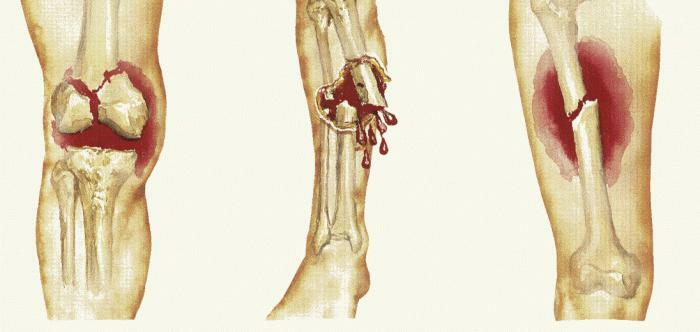
General Information
A closed fracture is a partial or total violation of bone integrity. Typically, this occurs with a load that significantly exceeds the strength of the traumatized portion of the skeleton. Such a pathological condition can be observed both as a result of trauma and as a result of various diseases accompanied by changes in the composition of bone tissues.
Severity of the patient's condition
The patient's health in open and closed fractures is caused by the size of the damaged bones, as well as by their number. If, as a result of the injury, large tubular bones are destroyed, this often leads to traumatic shock and heavy blood loss. It should be noted that after such a fracture the patients recover very slowly. Their recovery may take several months.
Classification of fractures
In medical practice, fractures are classified according to several criteria. As a rule, they are associated with the localization of injuries, the cause of the occurrence, direction, shape, severity, etc. However, immediately after the fracture, the first thing experts pay attention to is whether it is closed or open. After all, it is the integrity of the skin that first of all catches the eye not only to the traumatologist, but also to the injured. 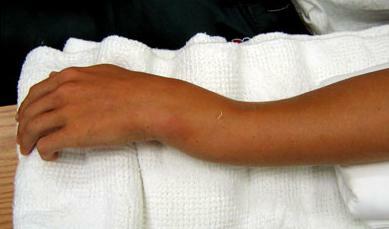
Open, closed fracture
There are two main types of fractures:
- Open. Such a fracture is accompanied by damage not only to the bones, but also to a violation of the integrity of the soft tissues that communicate with the external environment.
- Closed. This form is considered easier than open. This is due to the fact that damage to only bone tissue is characteristic for such a fracture. And the skin, ligaments, muscles, etc., remain intact.
Despite the fact that a closed fracture is considered an easy form of injury, it is mistaken to believe that it can not be treated. After all, the consequences for the victim can be extremely unpleasant.
Diagnosis
Diagnosing a closed fracture is much more difficult than open. It should also be noted that with minor trauma( for example, in the case of a crack without displacement), it is not immediately possible to detect pathology. After all, injured people very often write off the pain caused by a fracture, for an ordinary bruise. That's why you should know the signs that are characteristic of such a trauma. 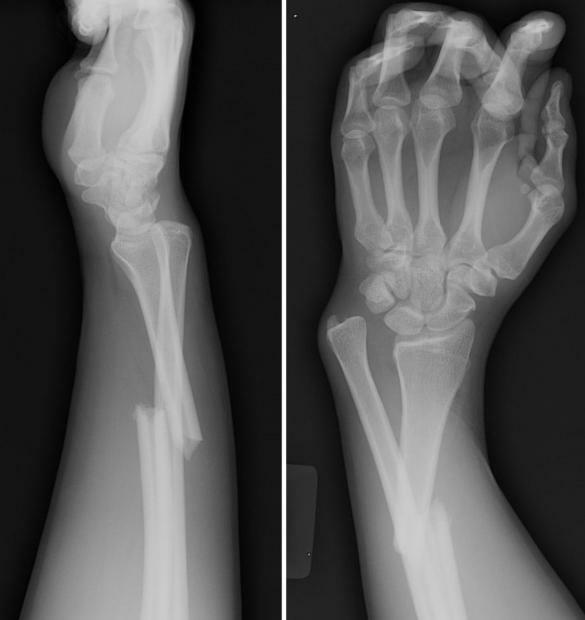
Symptoms of closed fracture
If you have a closed fracture of the ankle, a brush, etc., then most likely you will show the following symptoms:
- severe pain in the area of damage;
- swelling;
- deformities in that part of the limb where a fracture is suspected;
- characteristic crunch in the injured area;
- complete immobility or restriction in motion( in the event that the joint is damaged);
- hematoma;
- movement of bones where there is no joint.
It should be specially noted that with closed fractures, not all symptoms can be observed simultaneously. In this regard, for the final diagnosis, you must always consult a traumatologist and take an X-ray.
By the way, signs of closed fracture of the hands and feet are particularly prominent among the rest. After all, in this case, the victim can almost immediately understand that serious damage has occurred. This is due to the fact that, for example, with fractures of the bones of the lower extremities, the support to the injured leg is practically impossible.
Severity of defeat
The complexity of fractures can be:
- without bias;
- with offset.
Of course, a closed fracture without bias represents the easiest degree of damage. After all, with this form, the surrounding tissue is not destroyed by splinters of bones. Moreover, after receiving such an injury, the patient is restored in the shortest possible time.
Closed fracture with displacement occurs today very often. For such a deviation is typical displacement of fragments of bones in different planes. It should be noted that such trauma is the most difficult. After all, pointed bone pieces quite easily damage surrounding soft tissues( ligaments, muscles, vessels), which causes severe hemorrhage. 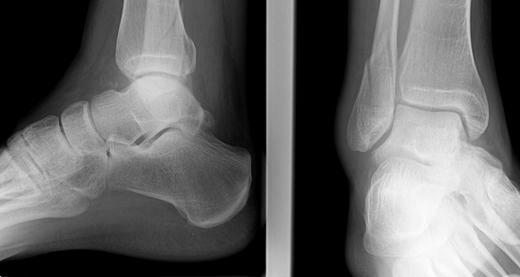
Especially dangerous is a fracture with a shift in the chest area. After all, fragments of ribs and other bones can attach to vital internal organs, which eventually leads to death.
The main symptoms of a fracture with a displacement
A closed fracture with a displacement is markedly different from a similar damage, but without the movement of bone fragments in different planes. Thus the patient can observe at itself:
- accruing blunt or sharp pain;
- swelling at the site of injury;
- joint deformation;
- unusual position of the damaged part of the body;
- pain during palpation;
- free joint sagging( eg, hands, feet, etc.).
Closed fracture: first aid to the injured
The main help to the injured with suspicion of a closed fracture is the immobilization of the damaged area of the body. This is necessary to ensure that no complications arise in the process of transportation to the hospital.
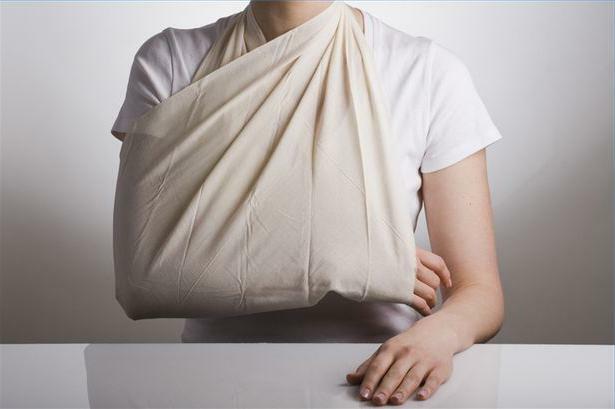
So how should you act if your loved one supposedly has a closed fracture? The first help in obtaining such an injury should be the imposition of a temporary tire on the affected area. In this case, your actions should be very cautious. After installation, the tire must be fixed using any fabric, and the bandage should not be tightened too tightly. Otherwise, blood circulation may be disturbed with the appearance of an even more severe edema.
What can I use as a tire? In the absence of special medical devices, any suitable long hard objects( for example, a board, ruler, stick, etc.) can be used. It is desirable to impose tires on both sides of the damaged area.
As is known, closed fractures of bones are always accompanied by swelling. In this regard, experts recommend that for a while, apply a cold compress to the sore spot. If the injured person is injured at home, then such a coolant may be a piece of meat from the freezer or ordinary ice, which should be pre-wrapped in a towel.
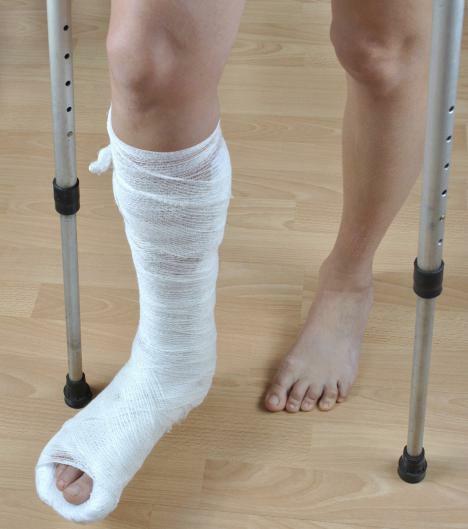
In case the patient experiences severe pain, it is recommended that he give an anesthetic.
Treatment of closed fracture
Closed fracture fracture represents the most complex degree of injury. Typically, this damage requires immediate surgical intervention to extract the fragments. If, in case of severe trauma, there is no operation to remove the pointed bones that literally rupture soft tissues, the patient may develop severe hemorrhage, which subsequently leads to suppuration of internal wounds and, as a result, amputation.
If the injury is simple, but still there is a displacement, then parts of the bones must be combined. This procedure should be performed only by an experienced traumatologist. Upon completion of the operation, a gypsum is applied to the damaged area of the body, which will serve as a fixative for the fracture and significantly reduce the likelihood of additional trauma.
Depending on the severity of the injury, the patient wears a plaster bandage from 2-3 weeks to 3-6 months. In the future, the patient is prescribed a massage, as well as physical therapy.
Very important in the rehabilitation period is the daily development of the damaged limb with the help of metered loads. In addition, for the fastest fusion of the bones, the patient is prescribed drugs containing calcium and other macro- and microelements.
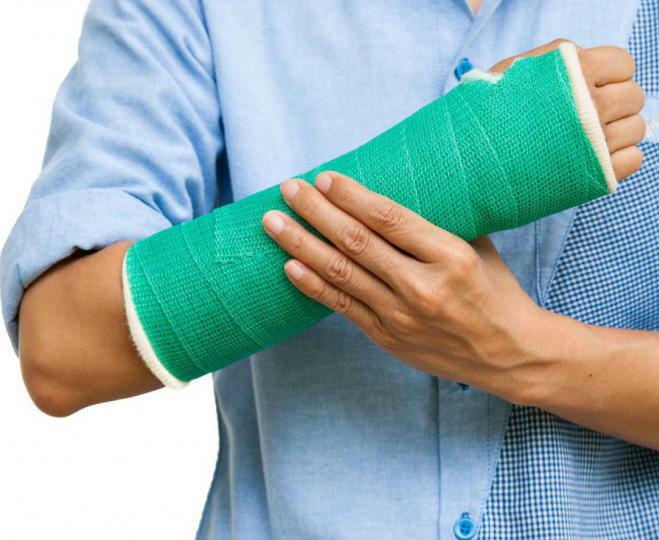
Summing up
A closed fracture with or without bias should be confirmed with objective data such as an X-ray. In addition, it is necessary to undergo a survey by a surgeon.
If the victim has a closed fracture with a displacement of bone fragments, then this requires repositioning. As a rule, such a procedure is performed under local anesthesia. It is extremely important that it be carried out by a professional. Otherwise, mismanagement will lead to such irreversible complications as loss of important limb functions.
